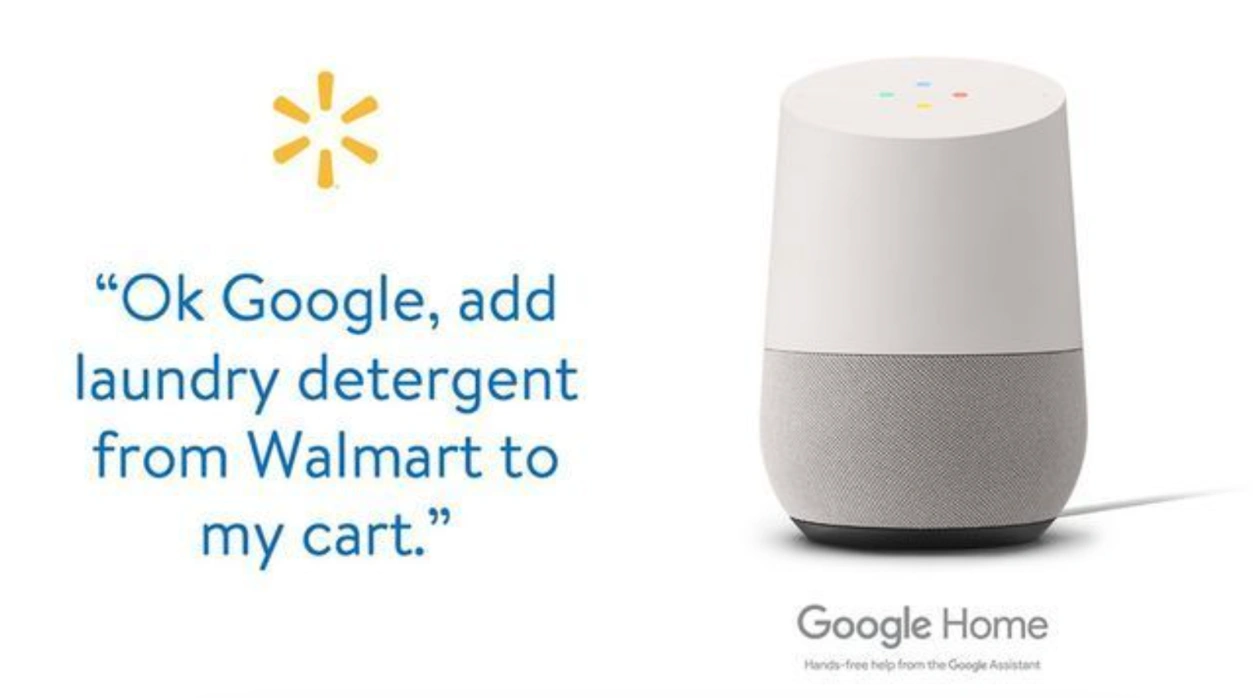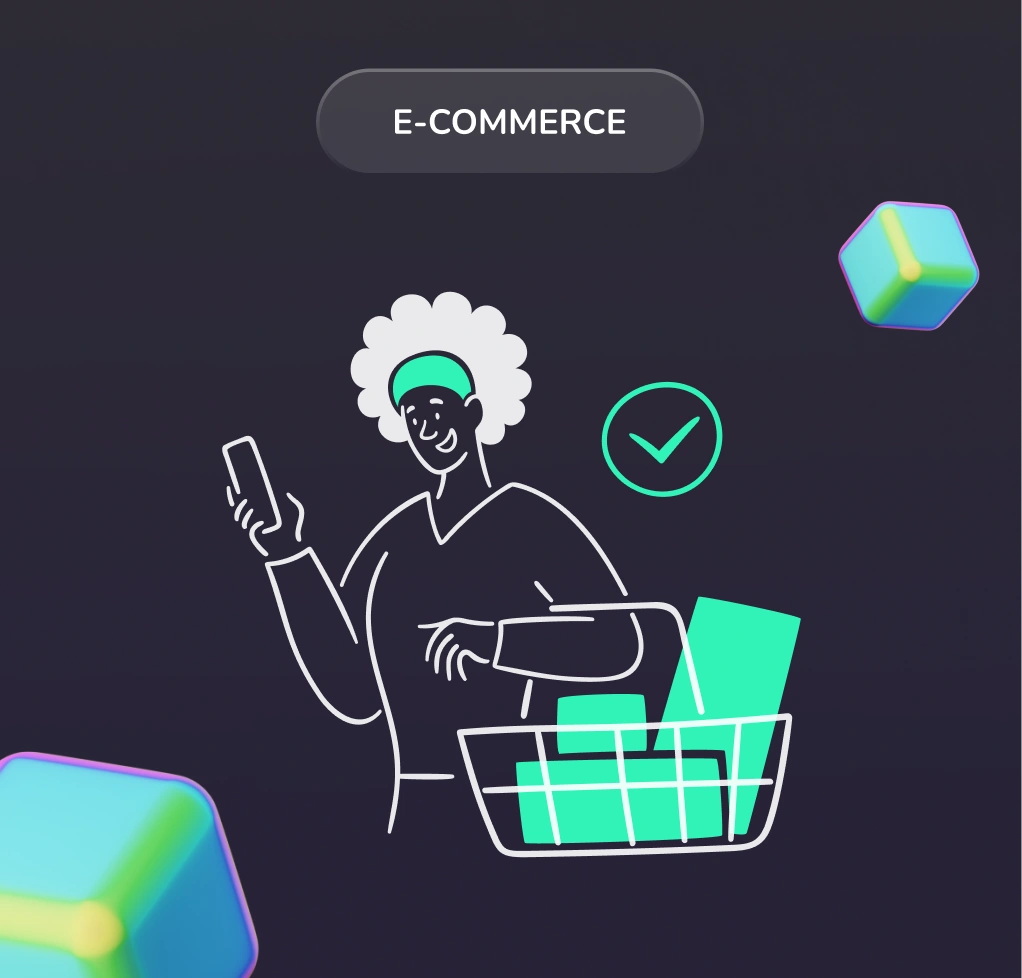
E-commerce is one of the most dynamic business sectors, requiring companies to adapt not only to shifting trends but also to evolving customer expectations. If you want to become a leader in your niche, you should implement e-commerce trends among the first. Let’s examine the hottest e-commerce tendencies together!
5 Key E-commerce Trends for 2025
E-commerce is an industry where yesterday’s innovations become today’s standards, and today’s trends shape the future. The pandemic solidified the shift to online shopping. It opens up the possibility of trading from anywhere in the world, but it has a huge drawback called “worldwide competition.”
To stay relevant, you need to become Alice in Wonderland. By this, we mean that you must run as fast as you can just to stay in place. And if you wish to succeed, you must run twice as fast as that.

These 5 online marketplace trends help you to become the best “runner” in any e-commerce niche:
- AI-Driven Personalization: Artificial intelligence helps you automate a myriad of operations, improve product recommendations for your users, and much more.
- AR/VR for Immersive Shopping: Augmented and virtual reality redefine product interactions, allowing customers to visualize items in real-world settings before purchasing.
- Sustainable Commerce: The desire to become eco-friendly has begun to spread even to online purchases.
- Voice Commerce: Shopping via voice assistants is slowly becoming a norm.
- Headless E-commerce: A flexible architecture unlocks unprecedented customization.
Let’s dive deeper into each trend of e-commerce website development in 2025.
Trend №1: AI-Powered Personalization
Artificial intelligence services are no longer exclusive to tech moguls. Today you can find AI tools for every business, including online retail:
- Hyper-personalized recommendations.
- AI chatbots & automated support.
- Demand forecasting & dynamic pricing.
🔹 Hyper-Personalized Recommendations
AI-driven algorithms analyze user behavior to deliver highly precise product suggestions. Amazon’s developers were aware of the power of AI 10 years ago, so even during the pre-pandemic years, 35% of their revenue came from AI suggestions. Now, those algorithms become even more advanced.
Netflix also relies on AI for its recommendation engine. As we told you in a previous article, they allocate a separate microservice just for content recommendation.
🔹 AI Chatbots & Automated Support
Big Retail uses AI chatbots on their websites to assist customers in selecting clothing based on their style preferences. Sephora takes it further with an AI-powered bot that analyzes skin tone and recommends cosmetics tailored to individual needs.
Smaller businesses often use AI-based chatbots on their socials to cut expenses for the customer support teams, at least on the social media part.
This level of automation in e-commerce development enhances user experience while reducing operational costs.
🔹 Demand Forecasting & Dynamic Pricing
AI enables businesses to predict demand fluctuations and optimize pricing strategies. Taxi and food delivery platforms adjust fees in real-time based on demand and other factors.
Trend №2: AR/VR for Interactive Shopping
Augmented reality (AR) and virtual reality (VR) are blurring the lines between online and offline shopping, allowing users to “try before they buy” in entirely new ways.
They don’t just entertain. They improve shopping efficiency, reduce product returns, and boost customer engagement. Here are 4 hottest AR trends that boost innovation in e-commerce in 2025:
- Virtual try-ons
- Interior visualization.
- Immersive VR shopping.
🔹 Virtual Try-Ons
European beauty retailer Notino offers an AR-powered tool that lets users test makeup virtually by applying digital masks via their cameras.
Nike takes it further with AI-enhanced AR that scans foot size, width, and arch height to recommend the perfect shoe fit.
🔹 Interior Visualization
IKEA’s AR app enables users to position virtual furniture inside their living spaces, allowing them to see how pieces will look and fit before purchasing.
🔹 Immersive VR Shopping
In 2020, Gucci presented online boutiques where users could “walk through” a store and browse collections in a 3D environment.
This wasn’t just an online shop. It was a digital embodiment of the Gucci experience, influencing retailers worldwide.
Trend №3: Sustainability
Consumers look beyond aesthetics; they want to purchase from brands that resonate with their beliefs. Sustainable shopping is more than just a trend. It’s the future of e-commerce.
Those who become pioneers of conscious e-commerce experience will set themselves in customers’ minds as trendsetters. If you want to ensure that your e-commerce business provides the best eco-experience, try the next e-commerce insights:
- Eco-friendly packaging & materials
- Reduced carbon footprint
- Certification & transparency
🔹 Eco-Friendly Packaging & Materials
Brands like Patagonia use recycled polyester made from plastic bottles, while Adidas has released sneakers made from ocean plastic. If your brand uses sustainable packaging, highlight it in your marketing.
🔹 Reducing Carbon Footprint
Modern companies are committing to lower emissions. Amazon’s “Shipment Zero” initiative aims for carbon-neutral deliveries by 2040. So, if your business contributes to reducing your carbon footprint, don’t be afraid to show it!
🔹 Certification & Transparency
Consumers want to know where products come from and how they’re made. They are more likely to buy coffee from a reputable farm rather than a semi-basement off-brand manufacturer. And it applies to any product.
Be transparent and show that you are trying your best to become an eco-conscious business. Stella McCartney avoids leather and fur, while The Body Shop supports fair trade and environmental protection.
Organic materials, waste reduction, and responsible sourcing are major selling points for any business in 2025. By integrating sustainability, you future-proof your brand in the eco-conscious world.
Trend №4: Voice Shopping
Voice assistants have already altered shopping behaviors, with millions using Google Assistant, Alexa, and Siri to research products.
With each year, these technologies become more intuitive, creating smoother experiences. Let’s dive into 3 mini-trends of voice shopping as a part of e-commerce technologies:
- Voice shopping
- Smart refrigerators & appliances
- Smart home integration
🔹 Voice Shopping
AI-powered voice assistants are making shopping easier by allowing users to place orders with a voice command.
You can fill Walmart’s shopping cart by simply chatting with Google Assistant or making some Amazon purchases while talking with Alexa. It will become more and more popular in other big and medium-sized businesses that can afford such collaboration.

🔹 Smart Refrigerators & Appliances
Smart devices with integrated services like Samsung’s Family Hub can automate shopping for items that are running low.
In the case of Samsung’s fridge, the device notices your purchase patterns, notifies you that you have little to eat, and offers you the option to purchase insufficient food. You can confirm the purchase by using your phone or even right in the fridge.
🔹 Smart Home Integration
Voice assistants are already a part of many home devices, and this trend will become even more apparent. For instance, the Nest Thermostat connects with other smart systems to manage electricity usage and lower heating bills.
Trend №5: Headless E-Commerce
Headless e-commerce is a game-changing custom e-commerce development trend. Unlike traditional platforms like Shopify or Magento, where the front-end (what users see) and the back-end (the system managing orders, payments, etc.) are tightly connected, headless architecture separates them into 2 different services.
But what does this digital commerce development trend mean for you as a business? The headless structure unlocks your precise control over your platform’s design, speed, and functionality. Meanwhile, your customers see that your website loads faster than rivals and has top-notch personalization.
Challenges in Implementing E-Commerce Trends in 2025
Each thing under the Sun has its advantages and disadvantages. Non-material things like retail industry trends are no exception to this rule. While AI, AR/VR, voice assistants, and sustainability offer immense benefits, you need to strategically plan each detail to ensure cost- and energy-efficient investment.
1. High Costs of Technology Implementation
Investing in cutting-edge technology during e-commerce software development requires solid investments. While large businesses can take lucrative loans, the budget aspect of technology implementation may become a stumbling block for small and mid-sized businesses.

Disruptive technologies may also disrupt businesses’ pockets
To overcome this challenge of e-commerce solutions development, start small. Determine your MVP and scale it gradually. Use hybrid solutions to cut costs without sacrificing quality. Collaborate with tech partners, such as Corpsoft Solutions, to develop new features. Such collaborations are great ways to implement new features but do it cost-efficiently.
In this case, you’ll still have a team of experts to create and support your project, but you save thousands of dollars on recruiting and paperwork for hiring and taxation. You don’t need to hire dozens of experts, pay taxes, and buy insurance for them since it’s a B2B collaboration.
2. Lack of Skilled Professionals
Implementing AI, AR/VR, and smart automation requires expertise. However, as we said, hiring and training in-house specialists is costly and time-consuming. The reliability of scattered freelancers leaves much to be desired.

You’ll never know whether a random freelancer actually works or just clocks hours into a freelancing platform
So, the best decision is to partner with well-established teams who are ready to sign an actual contract. That way, you can be sure that your dream project will be delivered on time without any risks associated with freelancers.
3. Complex Integration with Existing Systems
New technologies and digital commerce trends often require a complete revamp of internal infrastructure, leading to compatibility issues with legacy systems. For instance, transitioning to headless e-commerce involves restructuring APIs and platforms, which can be time-consuming.
To ensure that this transition will be as smooth as possible, plan your new integrations ahead. You need to access the idea in detail to determine whether the transition is worth the investment. Choose scalable platforms to simplify your future integrations for future growth.
4. Technical & Legal Barriers
All digital commerce trends come with regulatory challenges. Sustainable practices often require specialized supply chain adjustments and legal compliance. AI implementation can be slowed down by integration difficulties, computational costs, data privacy concerns, and biases.
AR/VR and voice tools are hard to integrate due to limited device compatibility and slow user adoption.
Meanwhile, you need to always remember consumer protection laws, data risks, intellectual property complexity, and accessibility concerns. You’ll need to stick to the law with any trend and initiative. Otherwise, you’ll risk losing your business, not in a funny “TV court” way.

5. Consumer Adoption & Behavioral Shifts
New technologies don’t gain instant acceptance. Moreover, it may take decades before pioneer technology becomes a common one. Many users are hesitant to adopt voice commerce or rely on AR or AI for shopping decisions.
So, you need to introduce those changes gradually to avoid overwhelming customers. We also recommend that you educate your customers before you roll up a new feature. Once you release it, provide as many tutorials as possible. Show benefits and real-world use cases of your new features.
Wrapping Up
E-commerce business development is constantly changing, and to gain desired success, you need to constantly adapt to all these initiatives. However, all those trends showcase complex technologies. So, you need to determine what trends benefit you most and focus only on those features.
It’s better to release one feature but do it the best in your niche rather than scattering your attention among various trends. But what development approach to choose here? We recommend you select agile development as it is easy to adjust to ever-changing e-commerce needs.
We at Corpsoft Solutions are a team of agile web and app development experts who are ready to skyrocket your business to new heights. Our e-commerce business development experts have vast experience in AI, AR, VR, and even blockchain solutions for e-commerce businesses. Contact us to become the leader of your niche!
FAQ
- What strategy would most help an e-commerce business drive traffic to its website?
The most effective promotion strategies combine search engine optimization (SEO), paid ads, and content marketing. If it suits your niche, you can also create content on social media, use PPC campaigns, and leverage affiliate marketing.
- How to grow an e-commerce business?
To grow a successful e-commerce business, focus on improving your website’s user experience, invest in digital marketing, and build a strong brand. Use data analytics to optimize your marketing efforts and understand how exactly to engage with your audience through email and content.
- How to boost e-commerce sales?
To boost e-commerce sales, optimize your website for speed and mobile use, implement targeted digital promotion, offer personal discounts, improve product descriptions and images, and use customer reviews to build trust.
Subscribe to our blog

